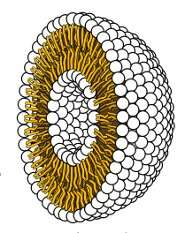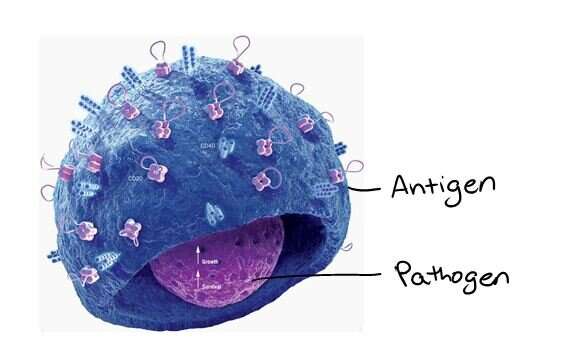
Liposomes—nano-sized spheres composed of fatty molecules—are very promising for vaccination. Bio-pharmaceutical scientist Naomi Benne discovered that the immune response in animal models can be steered by varying the charge of the liposomes. She obtained her Ph.D. degree on 8 September for this research, in which she studied possible treatments of cancer and atherosclerosis.
Treating cancer and atherosclerosis
Cancer and atherosclerosis are the two leading causes of death in the western world, with atherosclerosis being the predominant underlying pathology of cardiovascular disease. Their extremely high mortality rate is not the only thing these diseases have in common. Both conditions also affect the immune system, in particular our so-called T cells—the watchdog of our immune system.
The difference, however, is that T cells are underactive in cancer patients, while these cells are overactive in people experiencing atherosclerosis. “Therefore, we believe that both diseases could be treated with vaccines that either activate or reduce the immune response,” says the brand-new doctor Naomi Benne, who was supervised by professors Wim Jiskoot and Johan Kuiper and assistant professor Bram Slütter.
Nano-sized spheres
In her thesis, Benne studied liposomes. These nano-sized particles are spherical and consist of roughly the same molecules as our cell membrane: lipids—molecules with a water-attracting head and a water-repelling tail. These lipids form a double layer, which surrounds a water core.
“Liposomes are easy to make in the lab and they are very versatile,” says the researcher. “They can carry both water-soluble compounds—such as proteins and peptides—in their water core, and compounds that are insoluble in water in their double layer.” Another great feature of liposomes is that our body tolerates them very well. “Altogether, that makes them perfect for vaccine delivery.”

Charge matters
But can liposomes be effective in combatting cancer and atherosclerosis? To find this out, Benne took known antigens (see text frame below) and inserted them into positively and negatively charged liposomes. Next, she used these antigen-containing liposomes in animal models and studied the difference in effect between the charges.
A positively charged liposome appeared to wake up the watchdogs of the immune system. “We observed an inflammatory response, meaning that the antigen inside the liposomes activates the immune system, which in turn starts to attack cells in the body that correspond to this antigen. This could be useful for cancer treatment, as tumor cells suppress our immune cells so that they do not attack the tumor. A positively charged liposome with the right antigen could reverse this.”
Pathogen versus antigen
Traditionally, a pathogen is the virus or bacteria that makes you sick, while an antigen is a specific and unique part of the outside of a pathogen. Such an antigen can be used to train the immune system which cells, bacteria or viruses are safe, and which should be attacked, thereby curing diseases. Antigens need a vehicle to reach the right part in our bodies, and that is where liposomes come into play.
In a broader sense, an antigen is any molecular structure that can bind to our antibodies or immune cells and elicit an immune response. A cancer vaccine is based on this concept: by taking a tiny piece of a patient’s tumor and administering it as an antigen, the immune system is trained to attack the tumor.

A sleepy watchdog
When Benne used the same antigen inside a negatively charged liposome, she noticed something completely different. Now, the antigen helped to put the watchdogs down to sleep. “With a negatively charged liposome, the immune cells see the antigen as safe. This could be useful for treating auto-immune diseases such as atherosclerosis, in which the body starts to see normal and safe cells or proteins as a danger, eventually attacking them. With negatively charged liposome-based vaccines, we could train the immune system which cells are safe, thereby reversing the auto-immune response.”
Conveniently, it is easy to change the charge of a liposome, Benne explains. “You just start with different types of lipids that eventually form the liposome. It is a really simple technique.”
Personalized treatment
Source: Read Full Article






